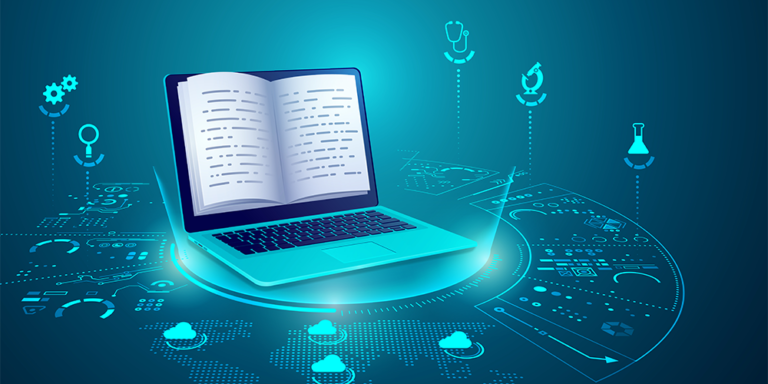Education, too, has seen a lot of revolution in the modern world, and that too due to technology. Technology on learning has provided a new way of learning; students cannot access information or interact with teachers similarly. With technology, they offer tools that allow for deeper Engagement, personalized learning, and more effective academic performance, whether online classes or interactive applications. Knowing how technology can affect learning will enable educators, students, and parents to seize upon the good and consider the possible drawbacks.
Information and Resources Access
Access to information is one of the most important effects of technology on learning. With a few clicks, students don’t have to be limited to textbooks and library resources to find information. Learners have access to research topics in-depth, explore multiple points of view, and explore materials that may suit their learning style. We are more informed than we have been for centuries: Digital libraries, online encyclopedias, and open-access pedagogical resources have brought us more knowledge than ever. The democratization of information thus allows students from different backgrounds to obtain high-quality education materials and have an otherwise unattainable level of access to learning.
Adaptive Technology and Personalized Learning
Personalized learning, an educational approach familiar to students thanks to technology, personalizes learning experiences to a student’s needs, abilities, and interests. Artificial intelligence kicks in on adaptive learning platforms, analyzes the student’s progress, and adjusts learning accordingly. This means that students who need more time before they grasp a topic want additional help, and students who are ready for something more challenging can continue learning. Personalized learning is a great way to accommodate different learning paces and styles and allow students to learn independently. Technology makes education more flexible and prevents students from being left behind regarding overall learning outcomes.

Interactive and Enhanced Engagement
Traditional learning methods can sometimes disengage students who find learning by doing or seeing more effective ways. Nevertheless, a wide selection of technology tools facilitates interactivity in learning and spontaneous student engagement. Educational games, simulations, and virtual reality experiences are tools students use to learn actively rather than passively. Say, a lesson on history may be a virtual tour of ancient cities, or a science class may be interactive experiments. Technology enables learning to be more dynamic and immersive and allows students to be more engaged, thereby capturing their interest and a deeper understanding of difficult subjects.
Communication & Collaboration
What technology has done is change the way that students and teachers communicate and work together. With the digitization of the world, students can collaborate on group projects and share or exchange resources, regardless of where they are located. Video conferencing and shared documents help students work together in real-time — ways that support teamwork and solutions searching. In addition, digital platforms allow teachers and students to communicate better between classroom hours, helping students ask questions, request feedback, clear out concepts, and the like. From this density of collaborative and communicative interaction, a more supportive learning environment and more active participation in education are encouraged.
Flexibility & Accessibility in Education
Technology has delivered Flexibility and access to the learning realm, making learning even easier and more open. Introducing online courses, digital classrooms, and learning from anywhere at any time. It is particularly useful to people working in remote areas, especially students or working professionals who can not visit educational institutions. Aside from that, technology has increased the accessibility of education to people with disabilities through assistive devices, screen readers, and other specialized tools. Technology eases barriers that could keep some people from learning opportunities by making education more accommodating to diverse needs and schedules.
Digital Skills for the Future Development
With digital literacy needed for future success, more and more technology is utilized daily. Students learn about technology in learning environments and develop skills to prepare them for the digital economy. Having notions of basic computer programs or how to use a special program is useful for almost any field. Schools integrate technology into learning to educate students on critical skills like data analysis, problem-solving, and digital communication. Technology-based learning also encourages flexibility, equipping students to navigate a world constantly being rebuilt by technological development.
Technology in learning potential problems
As is well known, technology has its advantages and disadvantages in learning. The second concern is that students may be tempted to engage in non-educational activities during study time. In addition, technology can result in less face-to-face interaction, so it is important to develop social skills. One more challenge is the digital divide, as not all students have similar access to technology, which can aggravate educational inequalities. As such, schools and educators must similarly work to balance the benefits of technology and potential downsides to produce a learning experience that maximizes positive results.
Conclusion
Technology greatly affects education, bringing tools that can enhance education by making it more accessible, interesting, and individualized. As technology has developed with adaptive learning, interactive applications, and collaborative platforms, the way students learn is changing. The benefits of using technology to teach are large, yet they contend with the digital distractions and the digital divide. Balanced integration of technology realizes the conditions for a learning experience for students that prepares them for the necessities of a digitally connected world and boosts lifelong learning and success.



